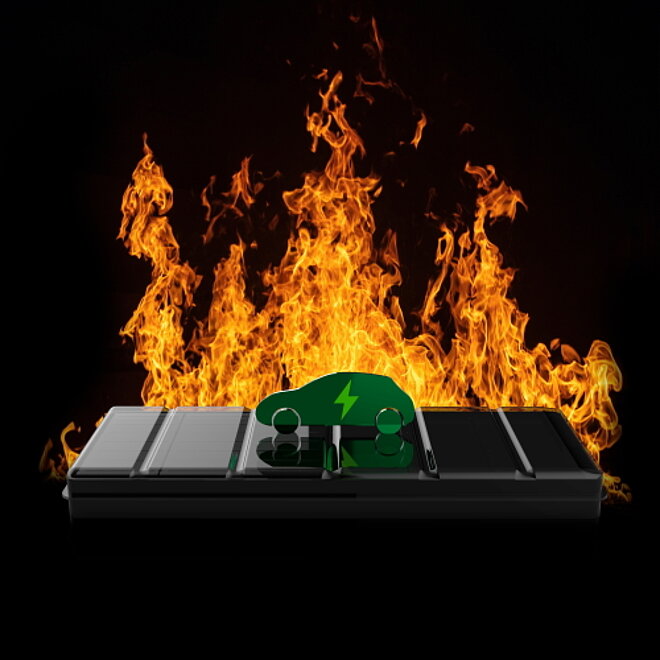Focus on the risks of e-mobility
![[Translate to English:] Merkle CAE Solutions Prüfkammer Explosion e-Mobilität [Translate to English:] Merkle CAE Solutions Prüfkammer Explosion e-Mobilität](/fileadmin/_processed_/b/6/csm_emobilit%C3%A4t_pruefkammern-explosion-merkle-cae-solutions_22da471d21.jpg)
The fire behavior of large lithium-ion batteries and even entire vehicles has frequently been the focus of public interest in recent months. In test laboratories, therefore, short circuits are deliberately provoked which, in addition to fires, can also lead to explosions under unfavorable conditions. Merkle CAE Solutions offers support based on simulation technologies not only in the prevention of thermal runaways, but also in the design of test chambers for individual cells, battery packs and entire electric vehicles with regard to the maximum expected fire and explosion loads.
Only at the end of last year, test hall operators were surprised by the force of the explosion during a provoked short circuit of a lithium-ion battery. An entire hall was severely damaged by the explosion. The loads of the test halls have to withstand the increasing demands of electromobility. The energy released by a battery fire is in the single-digit gigajoule range. The fire power is several megawatts. In the case of a fire involving an entire e-vehicle, the energy and also the power released quickly rise into the double-digit range. If explosions are added, test halls can quickly reach their limits.
The force of explosions and the energies released are a serious issue for test hall operators. With appropriate CFD flow programs, explosions can be accurately described based on the chemical reactions that take place. The duration of the explosion, as well as the pressure curve on the walls, taking into account the reflections of the pressure waves, can be precisely determined. Likewise, the resulting temperatures during the fire.
"Concrete walls usually carry loads in the range of 10-20 kN/m2. This corresponds to a pressure of 0.1-0.2 bar. When a gas explodes under ambient pressure, the volume increases by approximately 8 times, which corresponds to a maximum achievable theoretical pressure of 8 bar. This is also of interest for e-vehicles because hydrogen and other explosive gases can form during the fire of a lithium-ion battery. Depending on the oxygen content in the ambient air - hydrogen explodes on contact with oxygen - further explosions can thus also occur during a fire. These processes must be urgently taken into account when building or retrofitting test halls. In order to correctly design the loads on the buildings and also on the doors, which are often weak points, for the forces that arise, CFD simulations provide a solid basis," says Stefan Merkle, Managing Partner of Merkle CAE Solutions.

